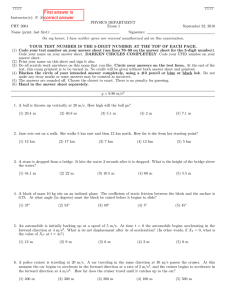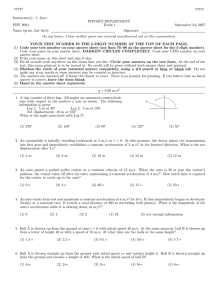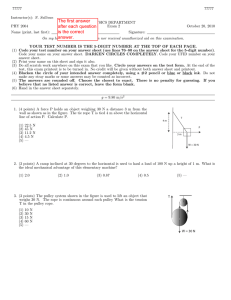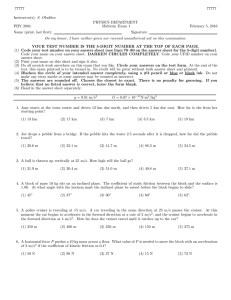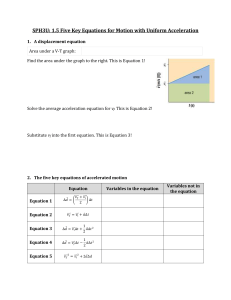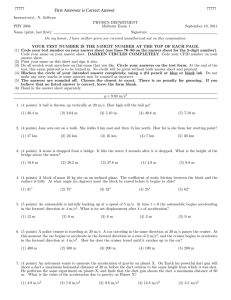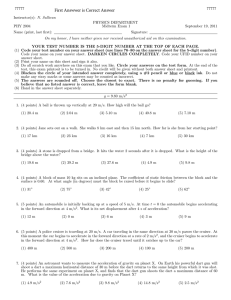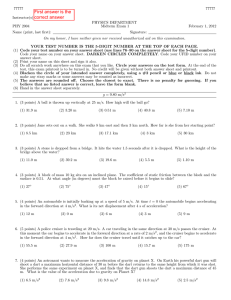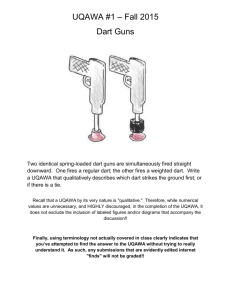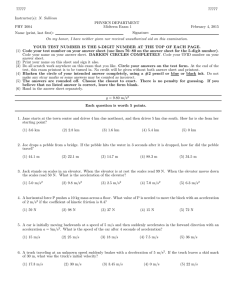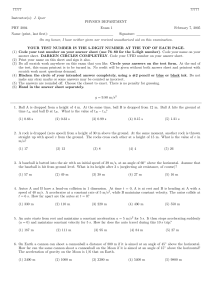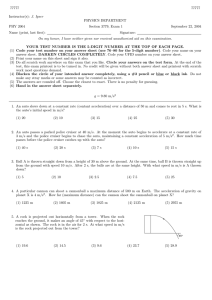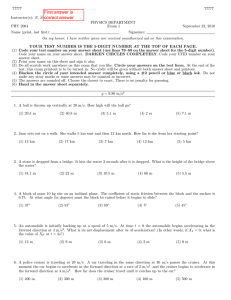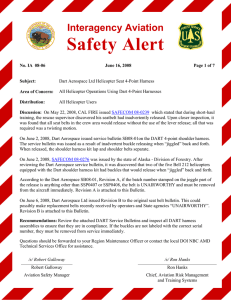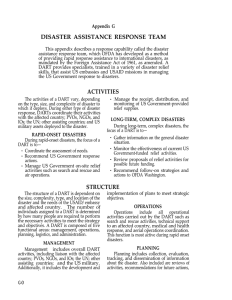First answer is correct answer
advertisement
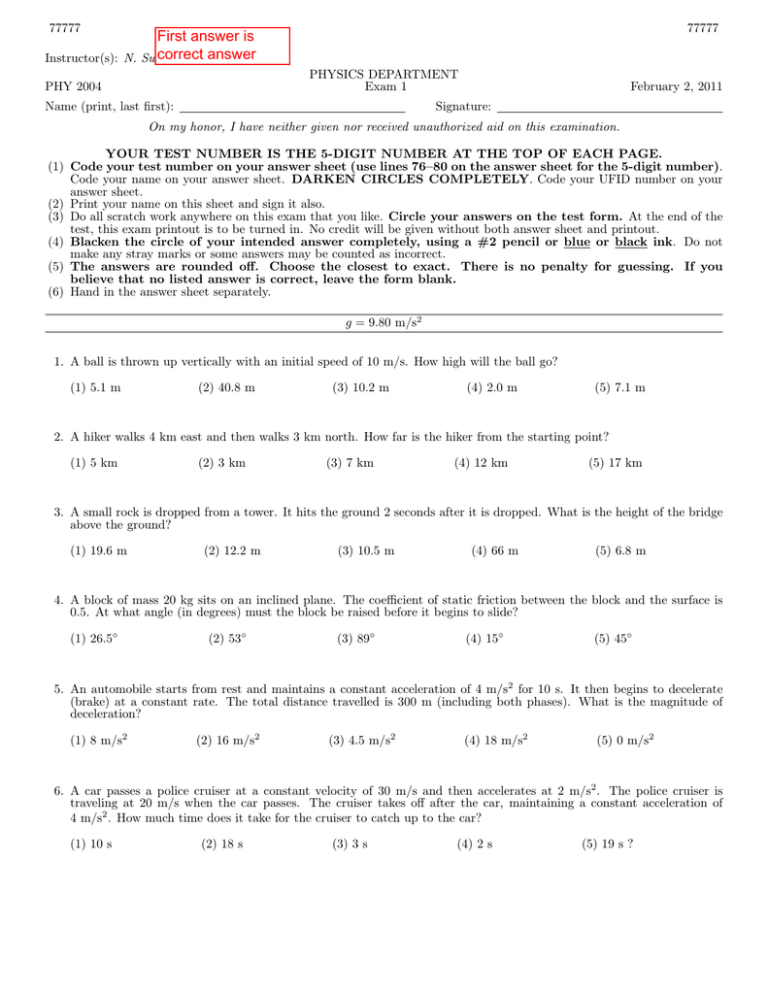
77777 77777 First answer is correct answer Instructor(s): N. Sullivan PHYSICS DEPARTMENT Exam 1 PHY 2004 Name (print, last first): February 2, 2011 Signature: On my honor, I have neither given nor received unauthorized aid on this examination. YOUR TEST NUMBER IS THE 5-DIGIT NUMBER AT THE TOP OF EACH PAGE. (1) Code your test number on your answer sheet (use lines 76–80 on the answer sheet for the 5-digit number). Code your name on your answer sheet. DARKEN CIRCLES COMPLETELY. Code your UFID number on your answer sheet. (2) Print your name on this sheet and sign it also. (3) Do all scratch work anywhere on this exam that you like. Circle your answers on the test form. At the end of the test, this exam printout is to be turned in. No credit will be given without both answer sheet and printout. (4) Blacken the circle of your intended answer completely, using a #2 pencil or blue or black ink. Do not make any stray marks or some answers may be counted as incorrect. (5) The answers are rounded off. Choose the closest to exact. There is no penalty for guessing. If you believe that no listed answer is correct, leave the form blank. (6) Hand in the answer sheet separately. g = 9.80 m/s2 1. A ball is thrown up vertically with an initial speed of 10 m/s. How high will the ball go? (1) 5.1 m (2) 40.8 m (3) 10.2 m (4) 2.0 m (5) 7.1 m 2. A hiker walks 4 km east and then walks 3 km north. How far is the hiker from the starting point? (1) 5 km (2) 3 km (3) 7 km (4) 12 km (5) 17 km 3. A small rock is dropped from a tower. It hits the ground 2 seconds after it is dropped. What is the height of the bridge above the ground? (1) 19.6 m (2) 12.2 m (3) 10.5 m (4) 66 m (5) 6.8 m 4. A block of mass 20 kg sits on an inclined plane. The coefficient of static friction between the block and the surface is 0.5. At what angle (in degrees) must the block be raised before it begins to slide? (1) 26.5◦ (2) 53◦ (3) 89◦ (4) 15◦ (5) 45◦ 5. An automobile starts from rest and maintains a constant acceleration of 4 m/s2 for 10 s. It then begins to decelerate (brake) at a constant rate. The total distance travelled is 300 m (including both phases). What is the magnitude of deceleration? (1) 8 m/s2 (2) 16 m/s2 (3) 4.5 m/s2 (4) 18 m/s2 (5) 0 m/s2 6. A car passes a police cruiser at a constant velocity of 30 m/s and then accelerates at 2 m/s2 . The police cruiser is traveling at 20 m/s when the car passes. The cruiser takes off after the car, maintaining a constant acceleration of 4 m/s2 . How much time does it take for the cruiser to catch up to the car? (1) 10 s (2) 18 s (3) 3 s (4) 2 s (5) 19 s ? 77777 77777 7. An astronaut wants to measure the acceleration of gravity on planet X. On Earth her powerful dart gun will shoot a dart a maximum horizontal distance of 30 m before the dart returns to the same height from which it was shot. She performs the same experiment on planet X, and finds that the dart gun shoots the dart a maximum distance of 45 m. What is the value of the acceleration due to gravity on Planet X? (1) 6.5 m/s2 (2) 3.8 m/s2 (3) 9.8 m/s2 (4) 12.4 m/s2 (5) 15.9 m/s2 8. A small truck of mass 2 × 103 kg is initially travelling at 40 m/s and brakes at a constant rate of deceleration. It comes to rest after traveling a distance of 100 m on a flat (horizontal) road. What is the magnitude of the horizontal force the truck exerts on the road? (1) 1.6 × 104 N (2) 3.1 × 103 N (3) 8.6 × 104 N (4) 9.2 × 103 N (5) 5.2 × 102 N
